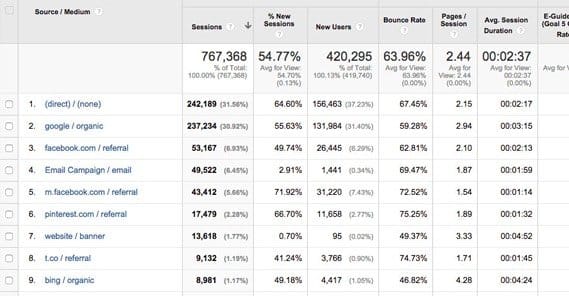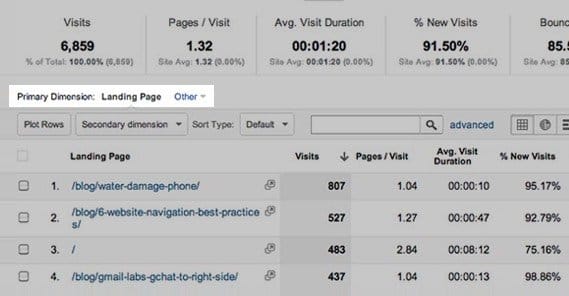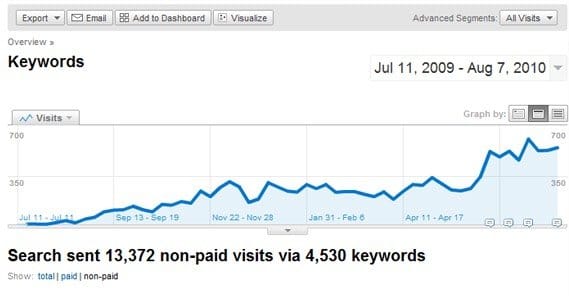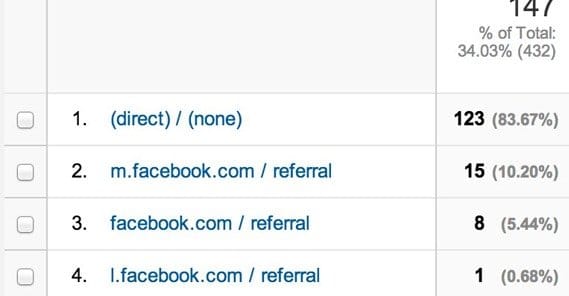Which Traffic Source Has The Best Converting Visitors?

You ask me this question, and I ask you several questions in return. What do you mean by a traffic source? Are you talking broadly, like “social traffic” and “organic traffic”? Are you speaking on a more specific level, like “traffic from Facebook” and “traffic from Twitter”? Also, do you honestly expect a simple answer?
The thing about a question like “what is the best converting traffic source” is that there is no answer. Your conversion rate and my conversion rate are going to be different. They can be different from day to day, from month to month, and from industry to industry. For that matter, the same traffic source can have different conversion rates on two different pieces of content. Users coming organically from Google will convert at different rates depending on their queries.
The only real answer I can give you is “check your analytics.” Only your own data will be able to tell you what your conversion rates are from source to source.
So, rather than try to tell you what traffic source is best, I’m going to run down the most common traffic sources and give you some pros and cons. You can use this general information, plus your own data as it relates to those traffic sources, to decide which have the most potential and which you should invest in.
Matching the Source to the Content
One thing you always have to remember is that different traffic sources are likely to be looking for different things when they visit your page. If you’re using paid advertising to market a free ebook, people are probably going to click through looking for an ebook and not much else. They might stick around for some content, but they won’t jump to your store page and buy your product. By contrast, people searching for you on YouTube are looking for video content, or content your video was about, and may not care for your non-video content.
If you want to have a high conversion rate, you need to understand the intent behind the traffic source, and make sure the destination is as catered to that intent as possible. Once you get people on your site as invested as possible, you can shape their experience and guide them towards your conversion objectives. If you’re still struggling with engaging them, conversions might not be possible from some sources.
Organic Search Traffic
Believe it or not, I’m not going to cover all of organic search as if it’s a single traffic source.
First of all, you have the different search engines. Yes, the majority of your organic traffic is going to come from Google, but you still have some from Bing/Yahoo and some from tertiary search engines like DuckDuckGo. You’ll obviously be focusing on Google traffic, but being aware of your traffic from smaller sources will help you understand their intent a little better.
Secondly, different queries will have different intent. Almost everyone is going to land on a piece of content on your site, as opposed to your homepage or your store page, so you have to be distinct with your content. Each piece of content should be focused in what sort of users will be arriving on it, what their search intent is, and how you can guide them one step deeper in the sales funnel.
Organic search is always a good traffic source to focus on because it’s “free” inasmuch as you aren’t paying per click or conversion. However, the path to optimization is an entire industry of its own, so it’s going to take a lot of effort.
Paid Search Traffic
Next up we have paid search traffic, which covers the same sources, but in a different light. With Google, you’re playing with AdWords, which means you’re spending money to get your ads in both the Google Search Results and the Google Display Network. You have access to an incredible amount of space, but at the same time, so do an incredible number of people. Some of the most competitive niches out there can cost upwards of $100 per click, and that’s a pretty steep con. Additionally, AdWords is difficult to get into and is a stickler for the rules, so if you cross the wrong line, you’re just going to be removed.
YouTube also has a paid search program, if you have the video content to advertise. However, with video, chances are you’re not necessarily sending people to your site at all. People browse YouTube with the intent to stay on YouTube and watch videos. They’re a lot less likely to click links in your descriptions. That said, if getting your information out there, or monetizing videos themselves are your goals, Paid YouTube traffic will be great.
Bing Ads are similar to Google, but with correspondingly lower costs and lower potential traffic numbers. I don’t recommend going all-in on Bing, but recognize that Bing and Google are going to have a lot of crossover, so you can test keywords and landing pages using Bing for cheap, then transition that knowledge over to Google.
There are also other paid search options. For example, for a very low fee, you can advertise on Yandex, which is a fairly large search engine primarily centered around Russian traffic. It’s great if you can do anything with Russian traffic at all, but if you can’t, there’s no reason to try it. Baidu is the same deal, except with Chinese and other Asian markets.
Organic Social Media Traffic
Social media sources are generally free, though most networks have paid ad networks as well, which I’ll talk about in the next section.
The primary benefit of going with organic social traffic is the ability to pull in that traffic on an ongoing basis, while also building a community, while also gaining market research, and a whole lot else. On the other hand, it’s difficult to get started with most social networks, and it can take a while to get over that initial hump without the addition of paid growth.
As a con to the pros above, organic social traffic isn’t necessarily a high converter. Unless you have a great product or a great offer, most social traffic will be about branding and community more than sales. People don’t like sales talk on their social feeds, and what’s more, the social networks don’t like it outside of their paid ads.
Facebook is the primary source of such community building and traffic, and for one reason; the massive audience. Facebook has well over a billion users, and while most of them won’t be in your demographics, even a fraction of a percentage of them is still more than some brands could dream of getting. On the other hand, you have to work to reach them, because Facebook’s feed filtering makes it hard for brands to reach even the people they follow, let alone new people.
Twitter is smaller and more focused on time-sensitive information, which is both good and bad. It’s not great for a lasting community, but it’s excellent for deals, offers, customer service, and news. Capitalize on those themes and you’ll be well positioned to make the most of it.
Reddit is social media, but it’s also a forum-like community, which means you’re able to find some deep social interactions with people. On the other hand, you’re going to have trouble overtly advertising, and Reddit’s demographics are skewed heavily towards a tech-savvy, young, B2C audience.
Instagram has a lot of engagement, and thus a lot of lasting community potential, but it’s not very good for direct advertising. You’re going to have to be circuitous with getting people to go out and visit your site, or really do anything beyond engaging on Instagram itself.
There are other social networks, but most of them will have similar constraints. Pinterest is a narrow community like an inverse Reddit mixed with Instagram. LinkedIn is great for professionals and some B2B, but less so for young casual audiences. The list goes on, but the networks get smaller and worse.
Paid Social Media Traffic
Consider the same list of networks as above. All of them have paid advertising options, all with their own pros and cons. Let’s go through them.
Facebook, obviously, is going to be the biggest and best. Like Google, they’re going to be more expensive and have more competition than other networks. However, Facebook stands out in that they have an absolutely immense number of possible targeting factors. You can get extremely specific in your prospective audience, and as such you can manipulate costs and conversions to be highly effective. In fact, it’s possibly one of the best converting traffic sources available today, with the caveat that you have to actually know your audience and use it properly. If your targeting is poorly set, you’re going to spend and spend and never get a single conversion.
Twitter is like Facebook Lite. They don’t have as many targeting options, but they do still have a reasonably large audience. Their ads have one primary benefit, which is the ability to schedule them to run concurrently with various real time events, so you can be advertising during your audience’s favorite TV shows and the like. Capitalizing on trends can get you everywhere.
Reddit has paid advertising, in the form of sponsored posts, and in some situations they can be very useful. However, you don’t get much targeting, and you’re limited in your exposure to the population of a given subreddit. Additionally, Reddit users are some of the highest proportioned audiences in terms of adblockers and ad sensitivity, so it can be hard to get a foothold and make a profit.
Mobile Traffic
There are a few ways you can get specifically mobile traffic. Before I dig into them, though, know that getting mobile traffic is predicated on being able to actually use it. If you don’t have a great mobile website, complete with engineered conversion paths for mobile users, you’re going to have a bad time. Mobile users tend to be fairly action-oriented when they tap on ads, so you’re not going to be building communities here. However, a landing page requiring a lot of tedious information is probably going to fall flat. Who wants to painstakingly type a dozen fields on a phone?
InMobi is a mobile ad network that runs ads inside many large apps, with a pretty good global presence. They’re great for volume, but not necessarily for quality, since a good chunk of the traffic comes from ad exchanges that other ad networks tap into, primarily DoubleClick. It’s a good network if you have a high budget and want a lot of traffic, but it’s not that good for smaller brands or lower budgets.
Millennial Media is a primarily North American mobile ad network, and as such their traffic tends to be both expensive and high quality. They also don’t really like affiliate marketing, and greatly prefer if you’re advertising a product you have made to sell. They’re also pretty difficult to get into, with some strict requirements in their review process. However, once you’re in, you can get some great conversions.
AirPush is a very clean, powerful network with targeting options that can almost rival Facebook. They can’t get quite that deep, of course, since they don’t harvest all the same kinds of personal data, but on the other hand they offer real time optimization. Unfortunately, they don’t have a very large staff and their primary business model, push ads, was removed a couple of years ago. This hampered their network significantly.
BuzzCity is a unique mobile ad network that has spent a lot of time developing exclusive relationships with app developers to show its ads. You aren’t competing with massive resellers or cross-network relationships. On the other hand, this is a lot of work, so they don’t get a lot of high-tier apps. Your traffic will be cheap, plentiful, and relatively low quality, meaning you won’t get many conversions unless you’re in the right specific niche.
What’s your favorite source of traffic? What converts best for you? There are many more options than are covered in this post, so feel free to explore, drop a few bucks on some ads, and test.

 ContentPowered.com
ContentPowered.com










